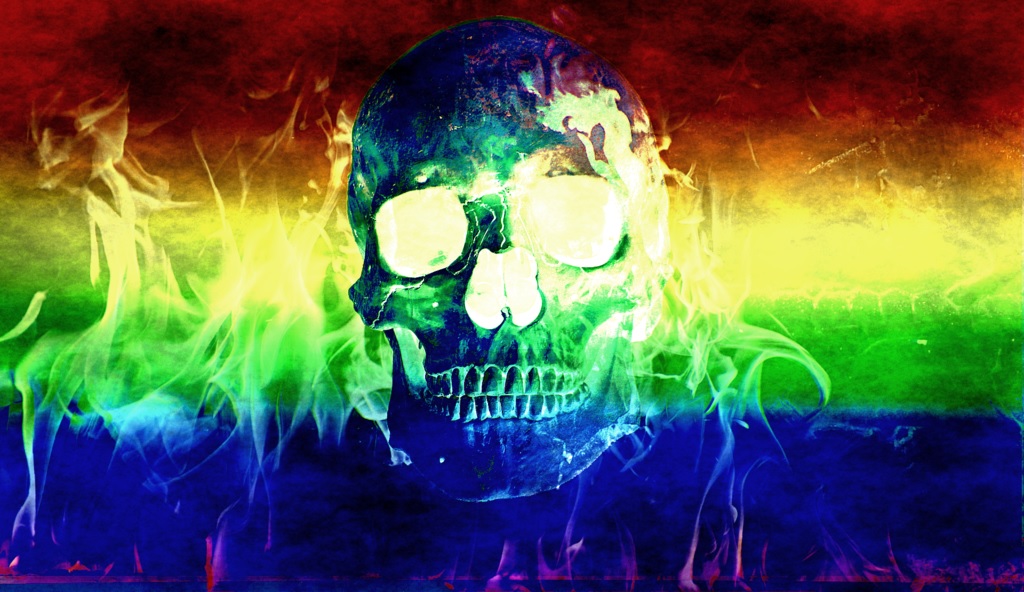The HIV disease burden, relative to the size of the “gay” male population, is of tremendous magnitude.
“Compared to other men and women, for the two HIV disease metrics, MSM rates were 38 to 75 times as high, and for P&S syphilis, rates were 63 to 109 as high. Data in the U.S. show that MSM make up approximately half of all persons living with HIV infection (whether diagnosed or undiagnosed) and that in 2009, MSM accounted for 61% of new infections. However, the rates calculated here indicate that this disease burden, relative to the size of the MSM population, is of tremendous magnitude.”
“Estimating the Population Size of Men Who Have Sex with Men in the United States to Obtain HIV and Syphilis Rates”
David W Purcell, et al.
Open AIDS J. 2012; 6: 98–107.
47.2% of “gay” partnered men are in a non-monogamous relationship.
“Couples were categorized as monogamous (52.8%), open (13.0%), monogamish (14.9%), and discrepant (19.3%).”
“Non-monogamy and sexual relationship quality among same-sex male couples.”
Parsons JT, et al.
J Fam Psychol. 2012 Oct;26(5):669-77.
62% of HIV-negative “gay” men tested positive for HPV.
“We found that 86% of HIV-positive MSM and 62% of HIV-negative MSM were seropositive for at least one 7-hrHPV type. 69% of HIV-positive and 41% of HIV-negative MSM were infected with at least one 7-hrHPV type at the anus, penis, or oral cavity.”
“Anal, Penile, and Oral High-Risk HPV Infections and HPV Seropositivity in HIV-Positive and HIV-Negative Men Who Have Sex with Men”
Vera M. van Rijn, et al.
PLoS One. 2014; 9(3): e92208.
The proportion of HIV infections related to condom failure appears substantial and higher than previously thought. That 51% of transmissions occur despite condom use may be conservative (i.e. low) since we used a relatively high estimate (87.1%) for condom effectiveness.
“Among Ontario MSM in 2009, an estimated 92,963 HIV-negative men had 1,184,343 episodes of anal sex with a condom and 117,133 anal sex acts without a condom with an HIV-positive partner. Of the 693 new HIV infections, 51% were through anal sex with a condom, 33% anal sex without a condom and 16% oral sex. For anal sex with a condom, the 95% confidence limits were 17% and 77%.”
“HIV transmission among men who have sex with men due to condom failure.”
Remis RS, et al.
PLoS One. 2014 Sep 11;9(9):e107540.
“Gay” men are more likely than heterosexual men to have experienced childhood physical and sexual abuse, and to have come from a “dysfunctional” home.
“The prevalence rates of child physical abuse significantly differed across sexual orientations for men. Specifically, heterosexual men reported fewer cases of physical abuse than gay men. The prevalence rates of child sexual abuse also significantly differed across sexual orientations…Rates of neglect also differed across sexual orientation among men. Heterosexual men reported fewer instances of neglect than gay men and bisexual men. Rates of household dysfunction also differed across sexual orientation among men. Specifically, heterosexual men reported fewer household dysfunction events than bisexual men and gay men.”
“Comparing the Rates of Early Childhood Victimization across Sexual Orientations: Heterosexual, Lesbian, Gay, Bisexual, and Mostly Heterosexual”
Christopher Zou and Judith P. Andersen
PLoS One. 2015; 10(10): e0139198.
Despite rising numbers of HIV infections in younger “gay” men, the practice of anal sex has increased to 84% among “gay” male millennials.
“The frequency of both oral sex and anal intercourse is currently quite high, regardless of generation (>95% and around 80%, respectively)… at around 32 years old, frequent anal intercourse was reported by 60.3% of the MSM of the 1972–1975 generation, 68.6% of the 1980–1983 generation, 81.7% of the 1988–1991 generation, and 84.1% of the 1996–1999 generation.”
“Sexual Behaviors of Homosexual and Bisexual Men in France: A Generational Approach”
Nicolas Méthy, et al.
PLoS One. 2015; 10(3): e0123151.
LGB college students experience worse mental health than their heterosexual peers.
“Lesbian, gay, and bisexual students were more likely to report any mental health disorder diagnosis than were heterosexual students. Lesbian, gay, bisexual, and unsure students were significantly more likely to report frequent mental distress compared to heterosexual students.”
Self-Reported Mental Disorders and Distress by Sexual Orientation: Results of the Minnesota College Student Health Survey.
Przedworski JM, et al.
Am J Prev Med. 2015 Jul;49(1):29-40.






I second the comments made by Kari above…you are brave and I pray for you almost every day. Stay strong, my brother in Christ. I am learning a lot from you.